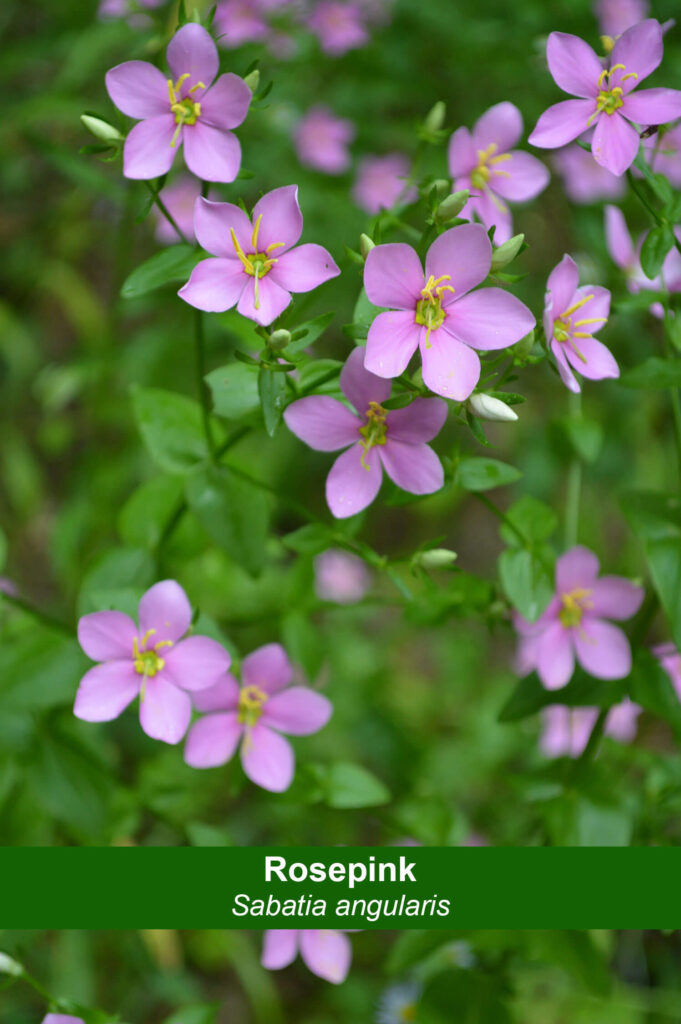This beauty can be found growing in the majority of the United States. It is native to the eastern U.S. – as far east as Kansas and Illinois, down to New Mexico, and north to Wisconsin. It is also native to Ontario, Canada. It is hardy in USDA zones 5 to 9.
Its vibrant pink or white flowers bloom in July through September and are about 1 inch in diameter with five petals. The unique star-shaped center of the flower is yellow-green and outlined with a red border. Anthers on the flower are yellow. The flowers close at night.
Plant Description
Rosepink, also called rose gentian, is a biennial plant, starting as a basal rosette, then growing erect in the second year. This plant can be one to three feet tall, with multiple branches.
The leaves are oval to heart-shaped and oppositely arranged. They are approximately 1.5 inches long by ½ inch wide.
The species name for this plant, angularis, stems from the square, angular stem of the plant. The stem of the plant is also winged.
Soil & Light Requirements
This wildflower can grow in a variety of habitats. From part-shade to full sun and moist to rocky soil, rosepinks grow in open woods, marshes, fields, meadows, grasslands, alongside roads, and uplands.

Wildlife Uses
The nectar and pollen of the rosepink are used by bees, butterflies, and skippers. The caterpillar of the moth Agyrostrotis anilis feeds on the plant. It is deer-resistant.
How to Grow Rosepink in Your Garden
Sow seeds outdoors in fall directly in the soil. Keep the soil moist until the plant is established.
Seeds are wind dispersed, so if you plant this wildflower in your garden and don’t want it to spread, you will need to remove the spent flowers.
